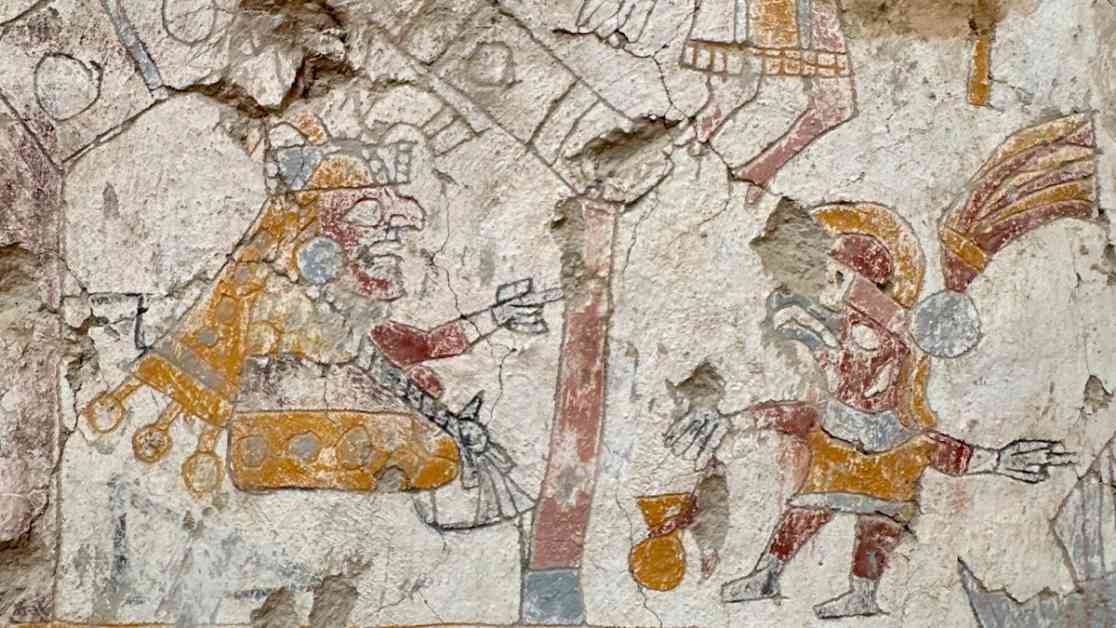Archaeologists in Peru recently made a fascinating discovery at the Pañamarca archaeological site – a 1,300-year-old throne room adorned with murals that depict a female Moche ruler. The Moche civilization thrived in northern Peru between 350 and 850 A.D., known for their intricate art and elaborate buildings.
What makes this find unique is the depiction of a queen in a throne room, a first for ancient Peru. The queen’s throne, made of adobe, contained remnants of greenstone beads and human hair, possibly belonging to the queen herself. DNA tests will be conducted on the hair to confirm this hypothesis.
The murals found in the throne room offer a glimpse into the queen’s life and reign. One mural shows her wearing a crown and raising a goblet, while another depicts her holding a scepter with a procession of men bringing offerings to her. Perhaps the most intriguing mural shows the queen conversing with a figure that appears to be part man, part bird.
Despite the elaborate throne room, archaeologists have yet to locate the queen’s tomb or skeletal remains. It is speculated that her tomb may have been looted in the past. The nature of the political structure during the Moche period remains a topic of debate, with evidence suggesting independent polities that shared religious beliefs and art styles.
Female rulers were not uncommon in ancient Moche society, with evidence of high-ranking women buried with elaborate jewelry and weapons. The discovery at Pañamarca adds to our understanding of the Moche civilization and their complex social structure.
This recent find is just the beginning of unraveling the mysteries of the Moche civilization. With ongoing research and discoveries, archaeologists continue to piece together the rich history of ancient Peru. The murals found in the throne room offer a rare glimpse into the life of a female ruler, shedding light on a society where women held positions of power and authority. As excavations at Pañamarca continue, we can expect more revelations that will reshape our understanding of this fascinating civilization.










